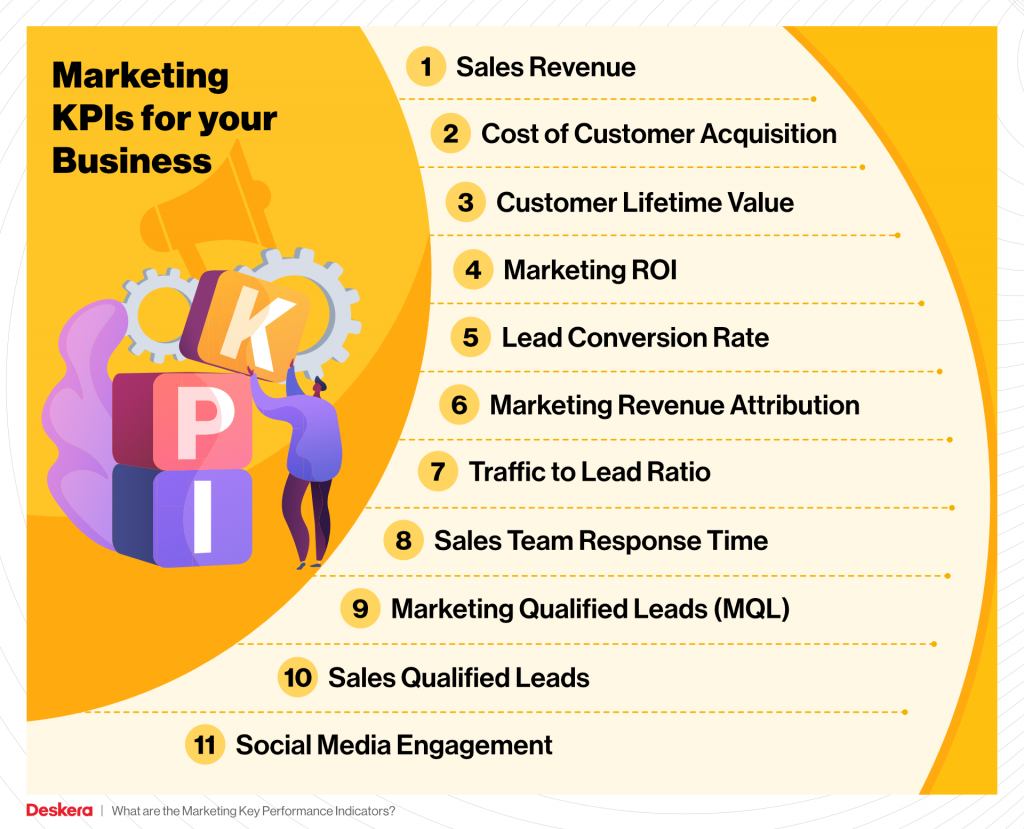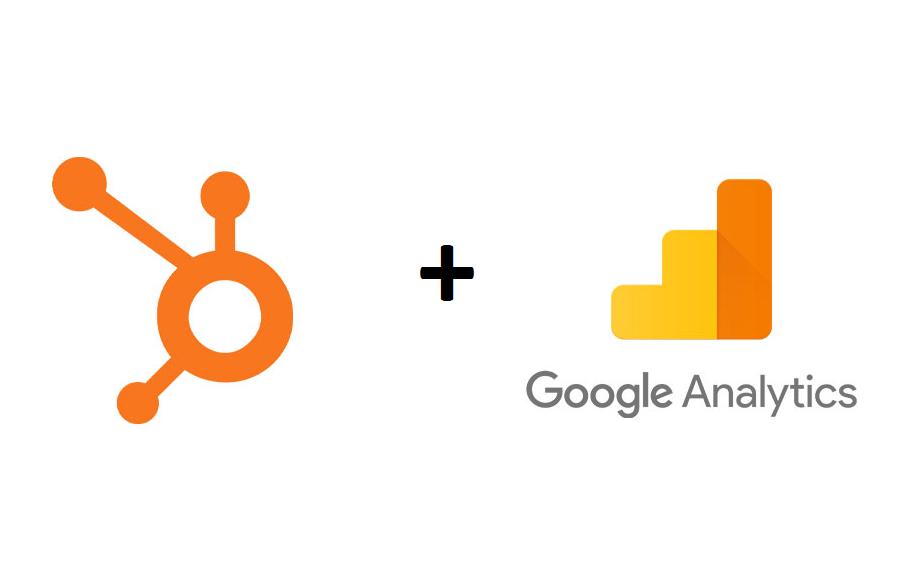Measuring the success of digital marketing activities is vital for the growth of any SaaS business. It involves a range of elements, such as effective online advertising and optimized customer support.
In today’s data-driven landscape, businesses have access to a wealth of information that can be leveraged to gauge performance and make well-informed decisions.
However, amidst the abundance of data, it is crucial to identify the KPIs that truly matter.
This blog will highlight the most important KPIs that can help optimize your digital marketing strategy and achieve better campaign results.
So, buckle up, and let’s get started.

Defining KPIs: What exactly does the term stand for?
Before diving into the specifics of KPIs, let’s ensure we clearly understand what they mean.
Simply put, think of KPIs as your reliable compass guiding you through your marketing journey.
They serve as invaluable metrics that provide crucial data about the effectiveness of your campaigns. By using KPIs, you can comprehend and evaluate the success of your marketing efforts through a broader lens. This will help you make intelligent decisions based on concrete data to produce profitable results.
Now, let’s look at the 14 key metrics that can change your campaigns and their results.
14 KPIs to Focus on For Better Digital Marketing ROI
1. Conversion rate
It is the proportion of website visitors who perform a desired action. For example, if a hundred people visit your website and two out of these hundred buy your subscription, complete a form, or sign up for a newsletter, this action will be considered for conversion rate calculation.
Conversion rate is a crucial KPI for finding out how your campaigns are performing to convert visitors into customers.
A greater conversion rate indicates your efforts effectively influence your audience, resulting in more business and growth. Consulting a SaaS Content Marketing Agency can help you develop actionable content to boost conversion rates on your website.
If you wish to know more about visitor tracking and conversion optimization, here’s an article for you.
2. Customer acquisition cost (CAC)
The CAC metric quantifies the average expenses involved in acquiring a new client. It encompasses various marketing and sales-related costs, such as advertising expenses, campaign costs, and wages for sales staff.
CAC helps you assess the effectiveness of your customer acquisition strategies. This also enables managers to make data-driven decisions, allocate budgets, and refine marketing tactics to optimize campaigns.
3. Customer lifetime value (CLV)
CLV revolves around comprehending the overall value that a customer brings to your business throughout the span of their relationship with you.
It considers factors such as their average spending per purchase, frequency of purchases, and length of their customer journey.
By understanding your CLV, you can identify those customers who contribute the most value to your business. This will empower you to focus your marketing efforts on such customers and provide them with personalized and targeted strategies to keep them engaged and loyal.
Ultimately, understanding CLV helps you maximize the long-term profitability of your customer relationships.
4. Website Traffic
The number of individuals visiting your website is commonly called website traffic.
It is crucial to monitor your website traffic as it allows you to evaluate the level of interaction people have with your brand.
It’s similar to measuring the reach and visibility of your website. By analyzing the traffic sources and understanding user behavior on your site, you can make informed decisions to optimize your marketing channels.
This way, you can attract more visitors who are interested in what you offer and enhance the overall effectiveness of your online presence.
5. Bounce rate
The bounce rate signifies the percentage of visitors who exit your website after viewing only one page. A high bounce rate can indicate the need for improved visitor engagement or a suboptimal user experience.
To address this, you can consider seeking assistance from a SaaS content marketing agency to optimize your website’s design, content, and navigation.
By doing so, you can decrease bounce rates and encourage visitors to explore more of your site, thereby increasing engagement and the likelihood of achieving your desired goals.
6. Click-through rate (CTR)
CTR measures the percentage of individuals who click on a specific link, such as an advertisement or a call-to-action button.
A higher CTR suggests that your marketing messages are compelling and effective in generating interest and driving action.
Monitoring your CTR will allow you to gauge the success of your campaigns and make adjustments as needed.
7. Cost per click (CPC)
CPC represents the average cost you pay for each click on your advertisements.
Keeping an eye on CPC is important because it provides insights into your advertising budget utilization.
The objective is to lower your CPC while still attracting valuable clicks.
By doing so, you can maximize the impact of your campaigns and derive the most value from your advertising investment.
Remember, it’s not just about acquiring more clicks but ensuring that those clicks are relevant and likely to lead to desired actions or conversions.
8. Social media engagement
It refers to how your audience responds and engages with the content you post on your business’s social media channels.
The metric includes actions such as likes, comments, shares, and retweets.
High engagement indicates that your audience genuinely likes your content. Apart from this, it signifies that your content connects with them, and they are actively participating in your campaigns.
Strong social media engagement suggests that your content strikes a chord with your audience and sparks interest, fostering a sense of community and conversation.
9. Email open rate
The email open rate indicates the percentage of people who open your emails.
It is a crucial metric for evaluating the success of your email marketing campaigns. A higher open rate implies that your subject lines engage and resonate with your subscribers.
To improve open rates, you can customize subject links to make them more personalized, create concise and unique content, and send targeted emails to specific segments of your email list.
These strategies increase the chances of your emails being opened and read by the right audience.
10. Return on investment (ROI)
ROI is the ultimate yardstick for measuring the profitability of your SaaS marketing campaigns.
It goes beyond just numbers and gives you a clear picture of the returns you have gained in comparison to the investment you have put in.
By closely monitoring your ROI, you can gain insights into which strategies deliver the best results and where you should allocate your resources.
It’s all about making smart decisions based on real data to ensure you get the most out of your marketing initiatives and optimize your overall business outcomes.
11. Organic search rankings
Organic search rankings determine where your website appears in the search engine results for relevant keywords.
A higher organic search ranking means better visibility and increased organic traffic.
To improve your rankings, it’s crucial to focus on keyword optimization, quality content creation, and building authoritative backlinks.
12. Landing page conversion rate
Your landing page is the gateway to conversions.
The landing page conversion rate measures the percentage of visitors completing a desired action on your page. This can refer to filling out a form or buying a subscription.
To optimize your landing page conversion rate, ensure a clear and compelling call-to-action, remove distractions, and conduct A/B testing to identify the most effective elements.
13. Social media audience growth
The growth of your social media audience will play an essential role in expanding your brand’s reach and disseminating its message.
By monitoring the growth of your follower count, you can assess the effectiveness of your social media strategies.
Engaging with your audience and sharing captivating and interactive content is crucial. Apart from this, it’s important to encourage them to comment and share your posts.
By doing this, you can foster organic and authentic growth, where your followers genuinely enjoy being a part of your community and actively contribute to expanding your reach.
14. Mobile traffic
With more and more people using smartphones and tablets to browse the web and engage with businesses, monitoring mobile traffic has become crucial for marketing.
Ensuring that your website looks visually appealing and functions seamlessly on mobile devices is essential.
It should automatically adjust and adapt to different screen sizes while loading quickly on mobile Internet connections. By providing a seamless and enjoyable mobile experience, you can attract and retain mobile users, keeping them engaged with your brand.
Wrapping up
You have now gained a basic understanding of the essential KPIs that can help significantly improve the outcomes of your marketing campaigns. By diligently monitoring these metrics and analyzing the insights they provide, you can make well-informed decisions to optimize your strategies and drive better results.
Additionally, it’s crucial to note that KPIs are not set in stone, and their relevance may vary based on your business interests. For optimal results, it’s critical to assess and refine your KPIs to ensure they align with your objectives and remain relevant to your evolving needs.
In this blog, we shared 14 key performance indicators that can help channel your SaaS business’ marketing efforts and reap better results.





